How to Fix Error Code Netflix Error Code TVQ-ST-131
Some Netflix users are encountering the error code TVQ-ST-131 whenever they attempt to connect with the app (they never get past the initial login screen). This particular error occurs on multiple platforms and typically points towards a network connectivity issue that is preventing your device from reaching the Netflix service.

As it turns out, there are several different causes that might contribute to the apparition of this error code. Here’s a shortlist of potential culprits that might be responsible for this error code:
- Server issue – As it turns out, this particular issue can very well be caused by a server issue. If this scenario is applicable, the only thing you can do is identify the server problem and wait for Netflix to fix the problem, since it’s beyond your control.
- Netflix account is stuck in a limbo state – According to some affected issue, this particular problem can occur in instances where the user account is not actually active even though the Netflix app interface shows that it is. In this case, signing out and back with your account should fix the issue.
- Restart or reboot your router – A network inconsistency can also be responsible for this particular error code. Typically, this problem is brought about by a Dynamic IP assigned by your ISP. In this case, you should be able to fix this problem either by restarting or by rebooting your router.
- Bad DNS Range – Bad DNS ranges are also known to be responsible for the apparition of this error code. The majority of affected users have managed to fix this problem by modifying the default DNS range and switching it to a more stable range provided by Google.
- Streaming is prohibited on your network – It’s also possible that your network administrator or even your ISP might be actively blocking your computer from communicating with Netflix. In this case, you need to get in contact with the involved party and ask for clarification.
Method 1: Investigating the Status of Netflix Server
Before you try any of the other fixes below, you should start this troubleshooting guide by ensuring that the Netflix service is not currently experiencing a server outage that might end up affecting playback on your device.
Fortunately, you can easily check for this simply by accessing the official status page of Netflix and check whether they are currently reporting any issues.
If the status page of Netflix currently reports a server problem, you can click on the Start Live Chat button and ask a support agent whether the current problem can affect device streaming in your area.
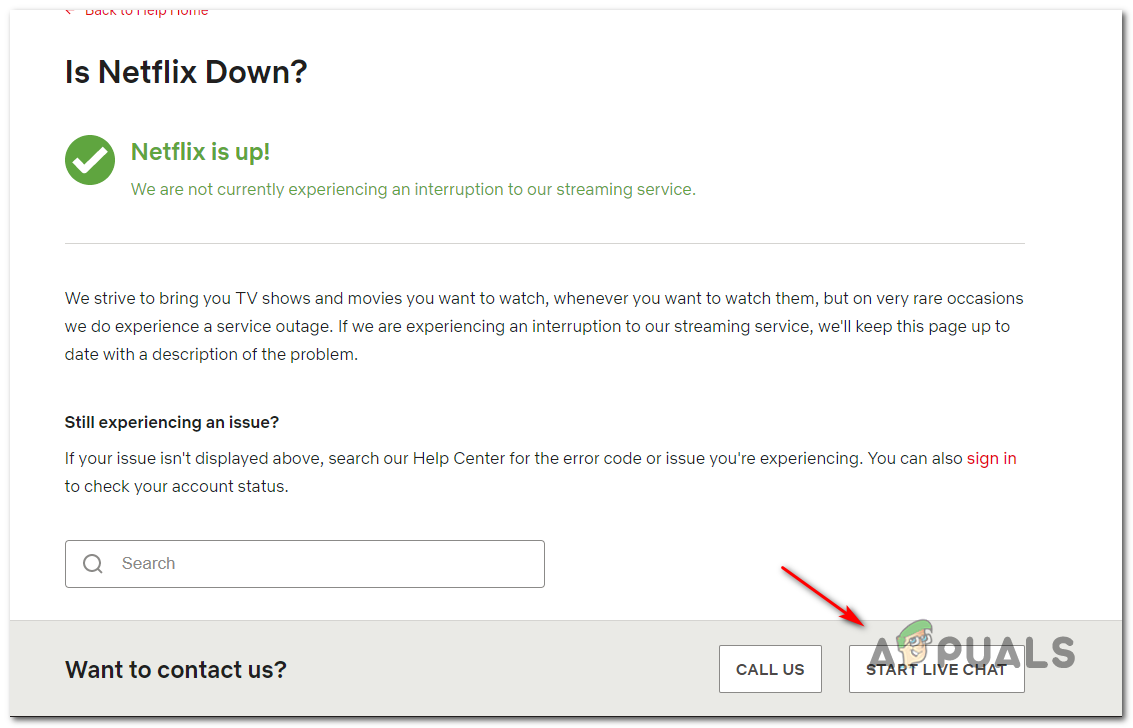
In case the investigation you just did has revealed a server problem, the only thing you can do right now is to wait for the problem to be resolved by Netflix.
On the other hand, if there’s no evidence of a server problem, all the signs point towards a local issue that you can fix by yourself. In this case, move down to the next potential fix below.
Method 2: Re-sign in with Netflix
As it turns out, on the majority of devices where the error code TVQ-ST-131 is encountered, this issue can very well occur due to a glitched sign up. What happens is, you are not actually signed into your Netflix account even though the app you’re using says you are.
This particular issue is way more common on Smart TVs and mobile (iOS and Android).
Fortunately, there is a quick and easy fix for this particular issue – All you need to do is force a sign out from your account before signing in again.
Of course, the exact instructions of doing this will be different depending on your device, but typically, you can do this by accessing your Netflix account menu and using the Sign out of Netflix account.
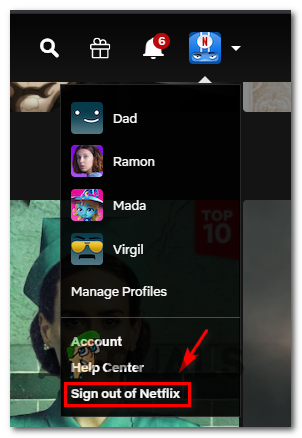
Once you have successfully signed out, sign back in by inserting your credentials, then resume streaming, and see if the problem is now resolved.
In case you’re still encountering the same error code TVQ-ST-131, move down to the next potential fix below.
Method 3: Restart or Reset your router
If you previously made sure that you’re not actually dealing with a server issue, the next thing you should look out for is a network inconsistency. This type of problem typically occurs in instances where your ISP (Internet Service Provider) will assign a Dynamic IP address from a pool that Netflix doesn’t like.
With a little bit of bad luck, the dynamic IP address you get assigned might be blacklisted by Netflix. If this scenario is applicable,e you have 2 ways forward:
- Restart your router – This will end up refreshing your TCP and IP connection, forcing your network device to assign you a new IP for the device where you’re streaming from Netflix on.
- Resetting your router – If the issue is rooted in a setting enforced by your router, you might need to return your network device settings to their factory state in order to fix the problem.
A. Restart your Router
This is the best way to force the allocation of new TCP and IP data without making any long-lasting changes that might disrupt the current functionality of your router.
In order to perform a router restart, take a look at the rear of your router and press the power button (On/Off button) to turn your network device Off.
Once you successfully manage to cut off the power, disconnect the power cable from the power outlet, and wait for a full minute in order to ensure that the power capacitors are completely drained.
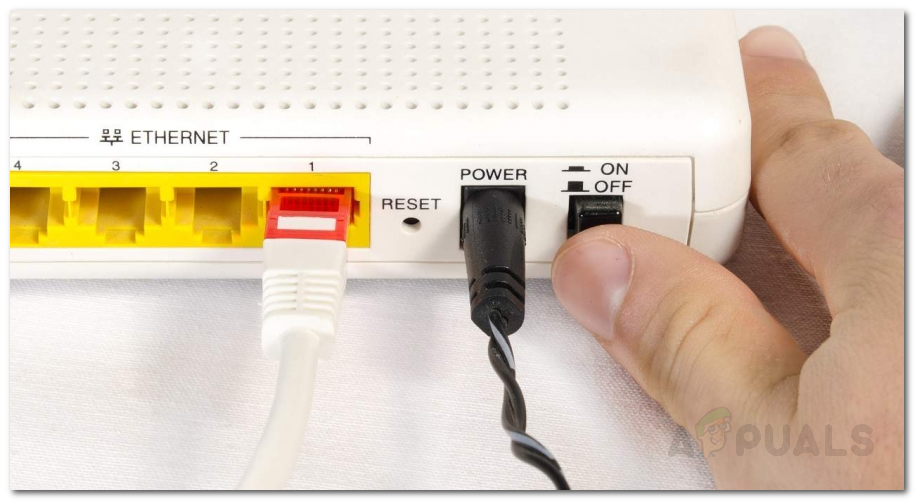
After you manage to restart your router and Internet access is reinitiated, wait until Internet access is returned, then attempt to sign in with Netflix once again and see if the problem is now resolved.
B. Reset your Router
If the simple restart procedure didn’t work for you, the next thing you should do to fix a more serious inconsistency is to go for a network reset.
If the problem originates from a router setting, your next step should be to reset your router to its factory state and see if Netflix streaming is fixed.
But keep in mind that by doing this, you’ll also resetting every setting that you might have previously established for your router. This includes saved PPPoE credentials, whitelisted or blocked ports, forwarded ports, etc.
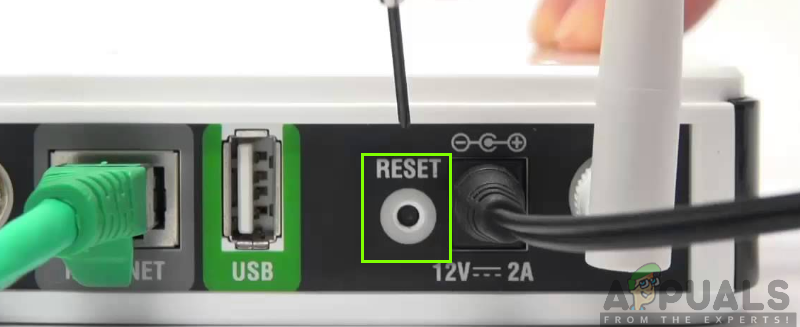
Note: Keep in mind that with the vast majority of router models, the Reset button will not be accessible unless you use a sharp object like a toothpick or a small screwdriver.
Once the reset procedure is complete, re-establish internet access (if your ISP is using PPPoE), you will need to re-insert the credentials supplied to you in your initial router setup to re-establish internet access.
Finally, attempt to stream content from Netflix again and see if the operation is complete.
In case the same problem is still occurring, move down to the next potential fix below.
Method 4: Changing the DNS range
As it turns out if you’re encountering this error code on PC, Xbox One or Playstation 4, chances are you’re dealing with a DNS (Domain Name Address) inconsistency that is affecting the streaming job.
Several affected users that were previously dealing with the same problem have confirmed that they managed to fix this problem by completing the migration to a more stable DNS.
Note: In the vast majority of cases, affected users have reported that they managed to fix the issue by changing the DNS to the values supplied by Google.
But keep in mind that depending on the platform where you’re encountering the error code TVQ-ST-131 on, the steps of changing the default DNS will be different. Because of this, we’ve created 3 different sub-guides, so feel free to follow the guide that’s applicable to your particular scenario:
A. Changing the DNS on Xbox One
- From the home screen of your Xbox One menu, press the Xbox button on your controller to bring up the guide menu. Once inside, access the Settings menu.
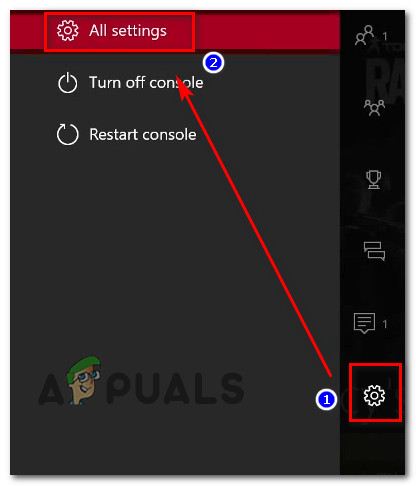
Accessing the Settings menu on Xbox One - From the Setting menu of your Xbox one console, select the Network tab from the vertical menu on the left, then move over to the right section and access the Network Settings sub-menu.
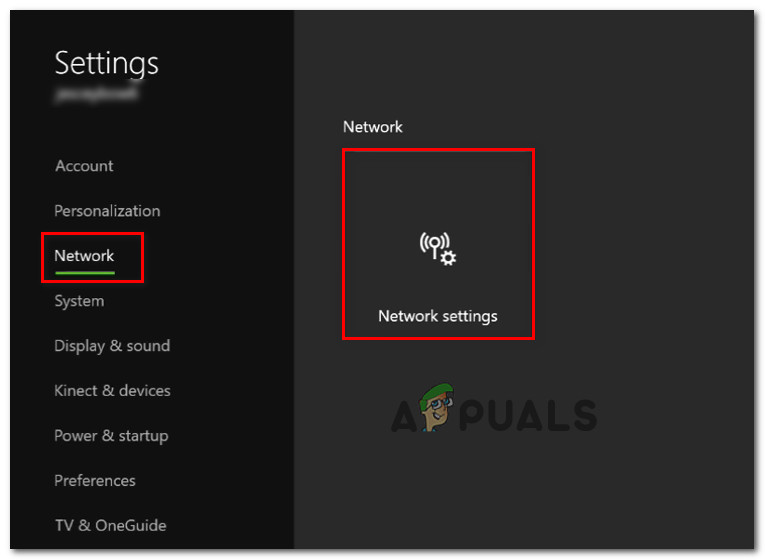
Accessing the Network settings menu - Inside the Network menu, access the Advanced Settings menu from the left-hand side section.

Xbox One Advanced Network Settings - Once you’re inside the Advanced Settings menu, select DNS settings, then choose Manual from the next prompt.
- Next, change the values for Primary DNS and Secondary DNS to the following:
Primary DNS: 8.8.8.8 Secondary DNS: 8.8.4.4

Google DNS Settings – Xbox Note: If you want to use the IPV6 protocol, use the following values instead:
Primary DNS: 208.67.222.222 Secondary DNS: 208.67.220.220
- Save the changes to enforce this new DNS as your default choice, then restart your console and see if the error code is resolved once the next startup is complete.
B. Changing the DNS on Playstation 4
- From the main dashboard of your PS4 console, start by swiping upwards, then use the left-hand thumbstick to select Settings, then press X to access this menu.

Accessing the Settings menu on PS4 - Once you’re inside the Settings menu, navigate to Settings > Network, and access the Set Up Internet Connection from the list of available options.
- From the next menu, choose Custom so you’ll have the option to establish a custom DNS.

Going for a Custom Internet Connection on Ps4 - At the next prompt, choose Automatically to allow your console the freedom to configure the IP address automatically.
- Next, choose Do not Specify when you get to the DHCP Host Name prompt.

DHCP Host Name - At the DNS Settings stage, choose Manual, then set the Primary DNS and Secondary DNS to the following values:
Primary DNS - 8.8.8.8 Secondary DNS - 8.8.4.4
Note: If you want to use the IPV6 protocol, use the following values instead:
Primary DNS - 208.67.222.222 Secondary DNS - 208.67.220.220
- Save the changes, then restart your console and see if the problem is now resolved.
C. Changing the DNS on PC
- Open up a Run dialog box by pressing Windows key + R. Next, type ‘ncpa.cpl‘ and hit Enter to open up the Network Connections window.
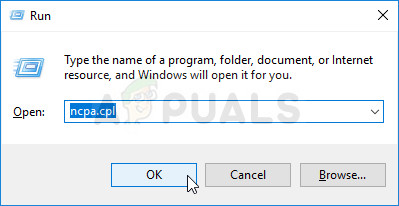
Opening the Network Connections window - From the Network Connections window, right-click on Wi-Fi (Wireless Network Connection) and choose Properties from the context menu. If you are using a wireless connection, right-click on Ethernet (Local Area Connection) instead.
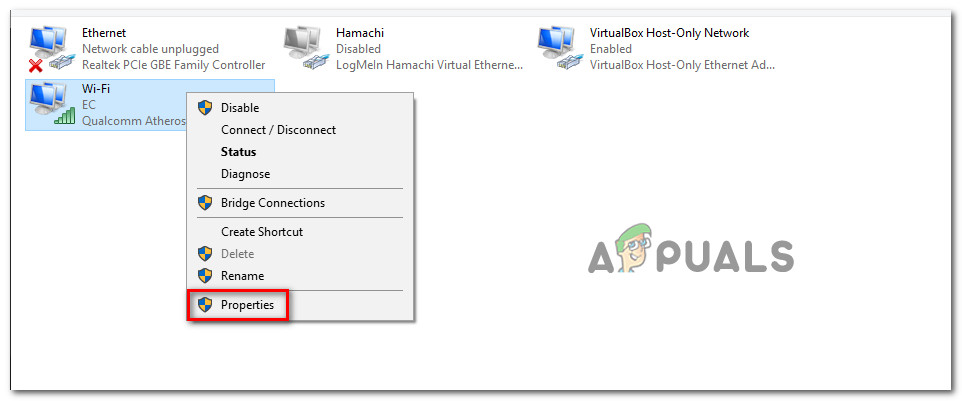
Opening the Properties screen of your network Note: When you’re prompted by the UAC (User Account Control), click Yes to grant admin privileges.
- At the Ethernet or Wifi window, navigate to the Networking tab, and find the section titled This connection uses the following items. When you get there, check the box associated with Internet Protocol Version 4 (TCP / IPv4), then click on the Properties button.
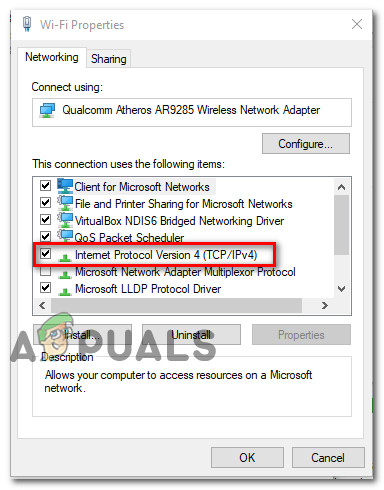
Accessing the Internet Protocol Version 4 settings - Once you’re inside the Internet Protocol Version 4 (TCP /IPv4) settings, click on General tab, enable the box associated with Use the following DNS server address.
- At the next screen, replace Preferred DNS server and Alternate DNS server with the following values:
8.8.8.8 8.8.4.4
Note: If you want to use the IPv6 protocol, use the following values instead for the Internet Protocol Version 6:
2001:4860:4860::8888
2001:4860:4860::8844 - Save the changes to enforce the new DNS, then restart your computer and see if the problem is resolved at the next computer startup.
If the same problem is still occurring, move down to the next potential fix below.
Method 5: Ensure that your network supports streaming
If you’ve come this far without a result, you should start considering the fact that you might be dealing with some kind of restriction where your network administrator or ISP is restricting access to streaming services like Netflix.
This is typically the case with networks like work, school, hotels, hospitals, and other types of public Netflix.
If you have the means to do so, check with your network administrator to make sure that streaming services are accepted or are being intentionally blocked.





